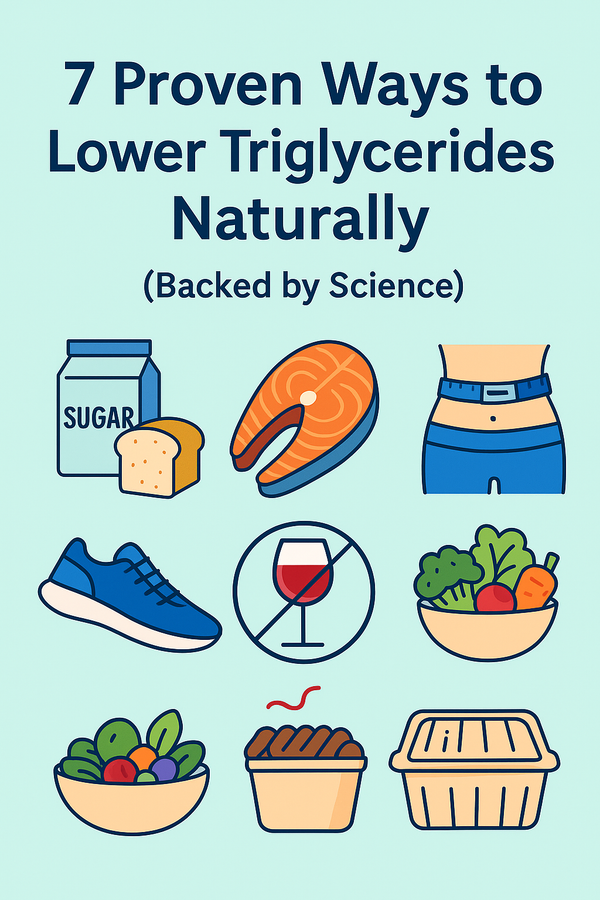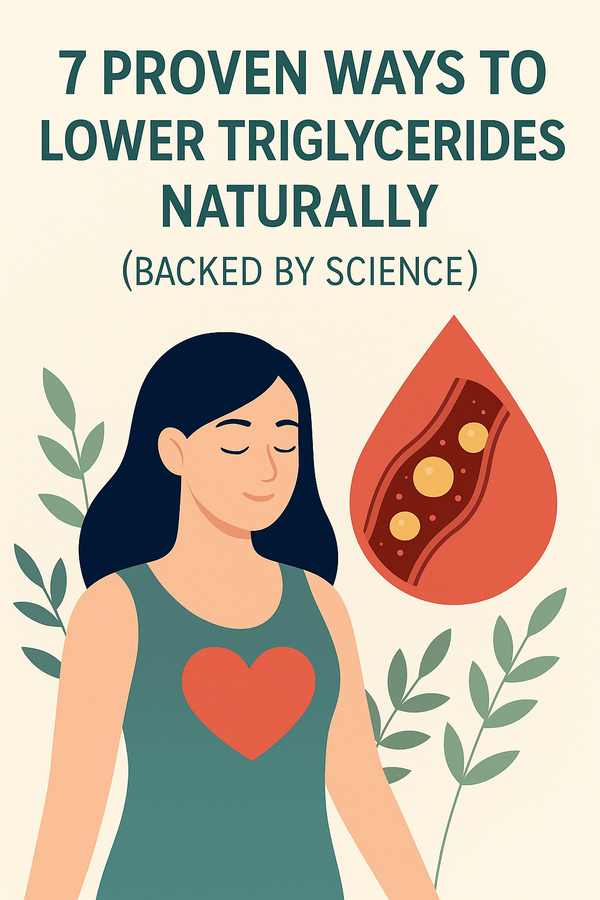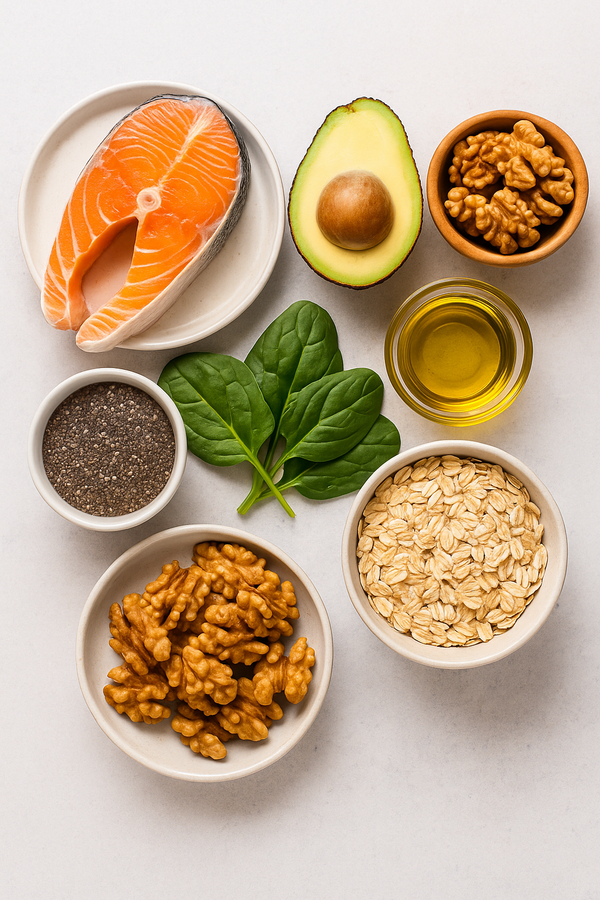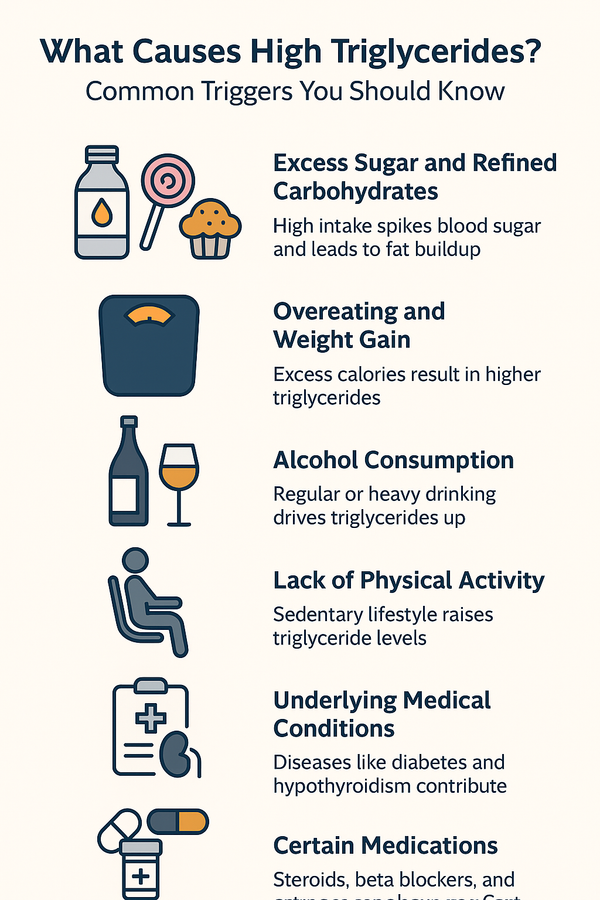High Triglycerides: Causes, Risks, and How to Lower Them Naturally

Meta Description:
Learn what causes high triglycerides, the health risks involved, and the best lifestyle changes to reduce them. Discover diet tips and treatment options.
What Are High Triglycerides?
Triglycerides are a type of fat (lipid) found in your blood. After you eat, your body converts any calories it doesn’t need into triglycerides, which are then stored in fat cells. While they are essential for energy, having too many can lead to serious health issues.
According to the American Heart Association, normal fasting triglyceride levels should be below 150 mg/dL. Levels between 150–199 mg/dL are borderline high, 200–499 mg/dL are high, and 500 mg/dL or above are very high.
What Causes High Triglycerides?
Several factors can contribute to elevated triglyceride levels:
- Overeating or high sugar intake
- Excess alcohol consumption
- Sedentary lifestyle
- Uncontrolled diabetes
- Obesity
- Thyroid dysfunction
- Certain medications (like steroids or beta blockers)
- Genetics
It’s also common to see high triglycerides in people with metabolic syndrome or insulin resistance.
Symptoms and Health Risks
High triglycerides often show no symptoms. Many people discover they have elevated levels only through routine blood tests.
However, untreated high triglycerides can increase the risk of:
- Heart disease
- Stroke
- Pancreatitis (especially if levels are > 500 mg/dL)
- Fatty liver disease
The risk is even higher when triglycerides are accompanied by high LDL (“bad”) cholesterol and low HDL (“good”) cholesterol.
How to Lower Triglycerides Naturally
1. Improve Your Diet
Making changes to your diet is one of the most effective ways to reduce triglycerides:
- Limit added sugars (soda, candy, baked goods)
- Cut down on refined carbs (white bread, pasta)
- Avoid trans fats and reduce saturated fats
- Eat more omega-3 fatty acids (from salmon, chia seeds, flaxseeds)
- Add fiber-rich foods like oats, beans, and leafy greens
- Watch portion sizes and avoid overeating
2. Exercise Regularly
Aerobic exercise, such as brisk walking, swimming, or cycling, can help reduce triglyceride levels. Aim for at least 150 minutes of moderate activity per week.
3. Limit Alcohol Intake
Alcohol is high in calories and sugar and has a strong effect on triglyceride levels—even small amounts can raise them in sensitive individuals.
4. Lose Excess Weight
If you're overweight, shedding even 5–10% of your body weight can significantly reduce triglycerides.
5. Control Underlying Health Conditions
Managing blood sugar and thyroid levels can also help keep triglycerides in check. For some people, medications such as fibrates, niacin, or statins may be prescribed.
Final Thoughts
High triglycerides are a silent threat that can lead to serious health problems if ignored. Thankfully, with lifestyle changes—especially diet, exercise, and weight control—they can often be managed naturally.
For best results, speak with your doctor about regular lipid testing and personalized treatment strategies.



